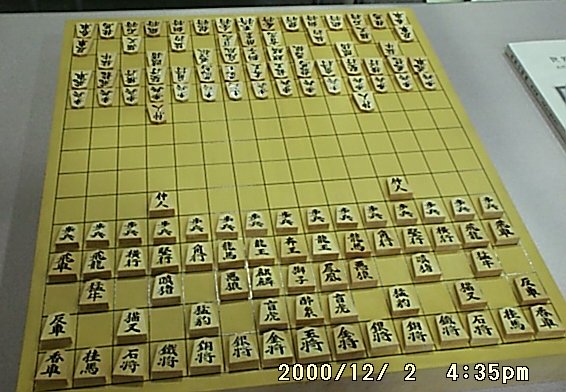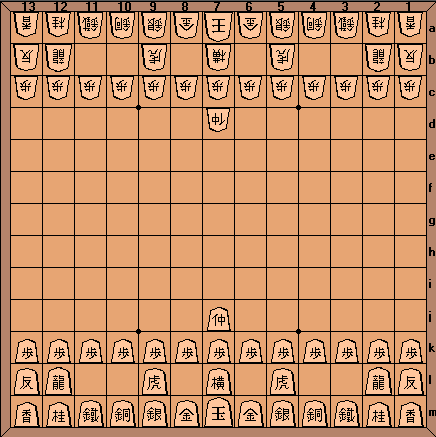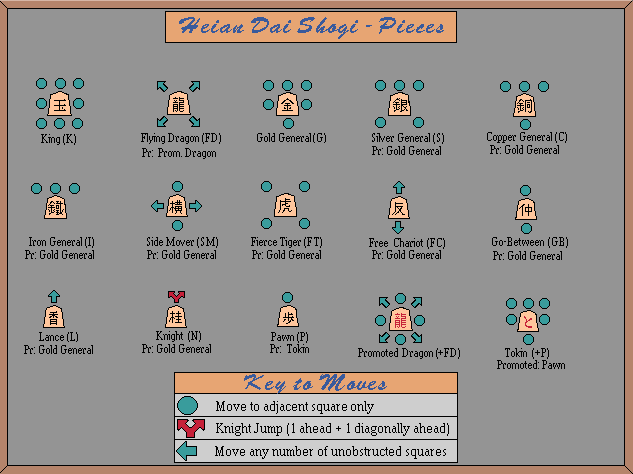Dai Shogi (Large Shogi)
Dai Shogi is played on a board of 15 x 15 squares and each player has 65 pieces (including 15 pawns). As with Chu Shogi and the other larger variants, there is no provision for returning captured pieces into play in Dai Shogi. This makes Dai Shogi more similar to Western Chess than modern Shogi.

RULES:
The players make alternate moves, with the object being to capture the opposing King. If the opposing player has obtained a Crown Prince by promotion, that piece must also be captured in order to win the game.
The rules are similar to those of Chu Shogi with the following exceptions:
-
There are 8 types of additional pieces: Honorable Horse (Knight), Angry Boar, Cat Sword, Evil Wolf, Violent Ox, Flying Dragon, Iron General and Stone General, all of them promoting to Gold General.
-
The Flying Dragon and Violent Ox can only move to the 2nd square in the directions indicated on the Piece Help screens (diagonally and orthogonally, respectively) if the intervening square is unoccupied (ie: they can not jump).
-
There are no restriction on the capture of Lions (as there are in Chu Shogi).
Unlike in Shogi, captured pieces in Dai Shogi can not be 'dropped' back into play. A captured piece is removed from play and takes no further part in the game.



(From Steve Evans)
HISTORY:
Heian Dai Shogi (Large Shogi from Heian period):
Dai Shogi is first attested as early as 1230, at the end of the Heian period. This first Dai Shogi was rather modest with only 34 pieces per side on a 13x13 board.
The large variant was played over a 13x13 board. It had 13 different pieces adding Copper General, Iron General, Side Mover, Wild Tiger, Flying Dragon, Free Chariot, and Go-Between to the 6 used in Heian Sho Shogi (King, Gold General, Silver General, Knight, Lance, and Pawn) already cited. The Flying Dragon was probably moving like the modern Kakugyo (i.e. like a Bishop). Maybe, it is not sure, the Free Chariot was like the Hisha (i.e. Rook).


(From Steve Evans)
Dai Shogi (Large Shogi):
The Dai Shogi evolved quickly and less than one century later (1300), the word named a broader version on a 15x15 board with 65 pieces per side.
Along with Sho Shogi (small Shogi) and Chu Shogi (middle Shogi) it formed a trio under which Shogi was actually differentiated in Middle Age Japan. At a time, it seems that it was the most prestigious sort as the word Shogi by itself was actually meaning Dai Shogi.
Experts believe now that Chu Shogi was created from Dai Shogi by dropping 8 (less interesting) pieces.





